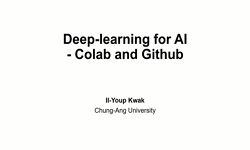클라우드 컴퓨팅 환경에서 기계학습 서비스를 제공하는 Machine-Learning-as-a-Service(MLaaS) 등이 활발히 개발됨에 따라 보다 다양한 분야에서 인공지능 기술을 손쉽고 효과적인 방법으로 활용할 수...
http://chineseinput.net/에서 pinyin(병음)방식으로 중국어를 변환할 수 있습니다.
변환된 중국어를 복사하여 사용하시면 됩니다.
- 中文 을 입력하시려면 zhongwen을 입력하시고 space를누르시면됩니다.
- 北京 을 입력하시려면 beijing을 입력하시고 space를 누르시면 됩니다.
https://www.riss.kr/link?id=A107199107
- 저자
- 발행기관
- 학술지명
- 권호사항
-
발행연도
2020
-
작성언어
Korean
- 주제어
-
등재정보
KCI등재
-
자료형태
학술저널
- 발행기관 URL
-
수록면
1031-1041(11쪽)
-
KCI 피인용횟수
0
- DOI식별코드
- 제공처
- 소장기관
-
0
상세조회 -
0
다운로드
부가정보
국문 초록 (Abstract)
클라우드 컴퓨팅 환경에서 기계학습 서비스를 제공하는 Machine-Learning-as-a-Service(MLaaS) 등이 활발히 개발됨에 따라 보다 다양한 분야에서 인공지능 기술을 손쉽고 효과적인 방법으로 활용할 수 있게 되었다. 클라우드 환경에서는 가상화 기술을 통해 각 사용자에게 논리적으로 독립된 컴퓨팅 공간을 제공하는데, 최근 시스템의 취약점을 이용해 클라우드 테넌트(tenant) 사이에 다양한 부채널이 존재할 수 있다는 연구 결과가 발표되고 있다. 본 논문에서는 이러한 멀티-테넌시(multi-tenancy) 환경에서 멜트다운 취약점을 이용하여 딥러닝 모델의 내부 정보를 추출할 수 있는 현실적인 공격 시나리오를 제시한다. 이후 TensorFlow 딥러닝 서비스에 대한 실험을 통해 92.875%의 정확도와 1.325kB/s의 속도로 인공신경망의 모든 정보를 추출할 수 있음을 보인다.
다국어 초록 (Multilingual Abstract)
Cloud computing technology plays an important role in the deep learning industry as deep learning services are deployed frequently on top of cloud infrastructures. In such cloud environment, virtualization technology provides logically independent and...
Cloud computing technology plays an important role in the deep learning industry as deep learning services are deployed frequently on top of cloud infrastructures. In such cloud environment, virtualization technology provides logically independent and isolated computing space for each tenant. However, recent studies demonstrate that by leveraging vulnerabilities of virtualization techniques and shared processor architectures in the cloud system, various side-channels can be established between cloud tenants. In this paper, we propose a novel attack scenario that can steal internal information of deep learning models by exploiting the Meltdown vulnerability in a multi-tenant system environment. On the basis of our experiment, the proposed attack method could extract internal information of a TensorFlow deep-learning service with 92.875% accuracy and 1.325kB/s extraction speed.
목차 (Table of Contents)
- 요약
- ABSTRACT
- I. 서론
- II. 기존 연구
- III. 배경지식
- 요약
- ABSTRACT
- I. 서론
- II. 기존 연구
- III. 배경지식
- IV. 제안 공격 기법
- V. 공격 실험
- VI. 공격 성능 분석
- VII. 대응방안
- VIII. 결론
- References
참고문헌 (Reference)
1 Schwarz, M., "ZombieLoad:Cross-privilege-boundary data sampling" 753-768, 2019
2 Simonyan, K., "Very deep convolutional networks for large-scale image recognition"
3 Deng, L., "The MNIST database of handwritten digit images for machine learning research [best of the web]" 29 (29): 141-142, 2012
4 Duddu, V., "Stealing neural networks via timing side channels"
5 Tramèr, F., "Stealing machine learning models via prediction apis" 601-618, 2016
6 Wang, B., "Stealing hyperparameters in machine learning" 36-52, 2018
7 Rossum, G.V., "Python tutorial" 620 : 1995
8 Papernot, N., "Practical black-box attacks against machine learning" 506-519, 2017
9 Fredrikson, M., "Model inversion attacks that exploit confidence information and basic countermeasures" 1322-1333, 2015
10 Lipp, M., "Meltdown: Reading kernel memory from user space" 973-990, 2018
1 Schwarz, M., "ZombieLoad:Cross-privilege-boundary data sampling" 753-768, 2019
2 Simonyan, K., "Very deep convolutional networks for large-scale image recognition"
3 Deng, L., "The MNIST database of handwritten digit images for machine learning research [best of the web]" 29 (29): 141-142, 2012
4 Duddu, V., "Stealing neural networks via timing side channels"
5 Tramèr, F., "Stealing machine learning models via prediction apis" 601-618, 2016
6 Wang, B., "Stealing hyperparameters in machine learning" 36-52, 2018
7 Rossum, G.V., "Python tutorial" 620 : 1995
8 Papernot, N., "Practical black-box attacks against machine learning" 506-519, 2017
9 Fredrikson, M., "Model inversion attacks that exploit confidence information and basic countermeasures" 1322-1333, 2015
10 Lipp, M., "Meltdown: Reading kernel memory from user space" 973-990, 2018
11 Wei, J., "Leaky DNN: Stealing Deep-learning Model Secret with GPU Context-switching Side-channel" 2020
12 Gruss, D., "Kaslr is dead: long live kaslr" Springer 161-176, 2017
13 Gregg, B., "KPTI/KAISER Meltdown Initial Performance Regressions"
14 Wei, L., "I know what you see:Power side-channel attack on convolutional neural network accelerators" 393-406, 2018
15 Jagielski, M., "High Accuracy and High Fidelity Extraction of Neural Networks" 2020
16 Weisse, O., "Foreshadow-NG:Breaking the virtual memory abstraction with transient out-of-order execution" 2018
17 Dong, G., "Floating-Point Multiplication Timing Attack on Deep Neural Network" 155-161, 2019
18 Yarom, Y., "FLUSH+RELOAD: a high resolution, low noise, L3 cache side-channel attack" 719-732, 2014
19 Moosavi-Dezfooli, S. M., "Deepfool: a simple and accurate method to fool deep neural networks" 2574-2582, 2016
20 Goodrich, M.T., "Data structures and algorithms in Python" John Wiley & Sons Ltd 2013
21 Zhang, Y., "Cross-tenant side-channel attacks in PaaS clouds" 990-1003, 2014
22 Inci, M. S., "Co-location detection on the cloud" Springer 19-34, 2016
23 Yan, M., "Cache Telepathy:Leveraging Shared Resource Attacks to Learn DNN Architectures" 2003-2020, 2020
24 Batina, L., "CSI NN: Reverse Engineering of Neural Network Architectures Through Electromagnetic Side Channel" 515-532, 2019
25 Zhu, J., "CPU security benchmark" 8-14, 2018
동일학술지(권/호) 다른 논문
-
Non-Random CAN Fuzzing을 통한 효율적인 ECU 분석 기술
- 한국정보보호학회
- 김형훈(Hyunghoon Kim)
- 2020
- KCI등재
-
기계학습을 이용한 소스코드 정적 분석 개선에 관한 연구
- 한국정보보호학회
- 박양환(Yang-Hwan Park)
- 2020
- KCI등재
-
산업제어망 보안 컴플라이언스를 위한 패치 영향성 평가 방안에 관한 실증 연구
- 한국정보보호학회
- 최인지(Inji Choi)
- 2020
- KCI등재
-
COVID-19 접촉자 추적 기술에 대한 평가 기준 마련 및 보안성 비교 · 분석
- 한국정보보호학회
- 이호준(Hojun Lee)
- 2020
- KCI등재
분석정보
인용정보 인용지수 설명보기
학술지 이력
| 연월일 | 이력구분 | 이력상세 | 등재구분 |
|---|---|---|---|
| 2026 | 평가예정 | 재인증평가 신청대상 (재인증) | |
| 2020-01-01 | 평가 | 등재학술지 유지 (재인증) |  |
| 2017-01-01 | 평가 | 등재학술지 유지 (계속평가) |  |
| 2013-01-01 | 평가 | 등재학술지 유지 (등재유지) |  |
| 2010-01-01 | 평가 | 등재학술지 유지 (등재유지) |  |
| 2008-01-01 | 평가 | 등재 1차 FAIL (등재유지) |  |
| 2005-01-01 | 평가 | 등재학술지 선정 (등재후보2차) |  |
| 2004-01-01 | 평가 | 등재후보 1차 PASS (등재후보1차) |  |
| 2003-01-01 | 평가 | 등재후보학술지 선정 (신규평가) |  |
학술지 인용정보
| 기준연도 | WOS-KCI 통합IF(2년) | KCIF(2년) | KCIF(3년) |
|---|---|---|---|
| 2016 | 0.41 | 0.41 | 0.43 |
| KCIF(4년) | KCIF(5년) | 중심성지수(3년) | 즉시성지수 |
| 0.45 | 0.4 | 0.508 | 0.04 |





 ScienceON
ScienceON DBpia
DBpia







